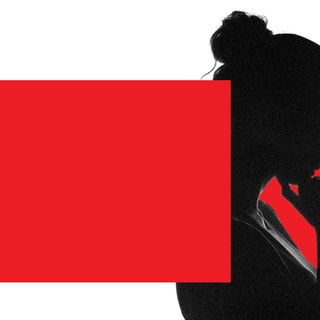
Why We Keep Ignoring Crisis Warnings
People — and governments — can underplay danger because of perceived distance, a sense of exceptionalism, or even of futility.

The person who gets killed in horror movies never sees it coming. Perhaps you, as a spectator, hear the dramatic music, see the shadow lingering in the corner, know with absolute certainty what’s through the door. But the person is untroubled and ventures forth towards absolute danger. It would be frivolous to liken Covid19, for instance, or climate change, to a horror movie — but the premise is hard to shake. One would think the end of the world or unprecedented loss of lives would scare us, but our response remains disjointed at best. What frames our threat perception, then, and when do we stop paying attention?
These are questions experts have asked and tried to answer. The long and short of it is people’s biases in seeing, perceiving, and receiving warning signs play a role in determining how, why, and when we spring to action. This also means that managing psychological factors is important when trying to prevent a catastrophe — in this case, a global pandemic.
For starters, we experience something called the ‘optimism bias’ or the ‘belief bias’ — where someone may be lulled into thinking a disaster can befall others, but not them. Think of the bias as a big blind spot, where people place themselves within a comfortable periphery and think they can evade danger. The global response to Covid19 was along similar lines for the longest time (and still is, to an extent): people refused to wear masks, attended large-scale gatherings, or ridiculed cautions because of a prevailing sense of exceptionalism. This is not only contained to global, large-scale crises but also micro activities. Why do people smoke or eat unhealthy meat despite knowing it could very well kill them in the end. The optimism, even if unrealistic, skews our perception.
Also fueling this optimism bias is a sense of perceived distance: the crisis will not impact you, and so, it’s okay to overlook the warnings. A variety of studies test in the following format: when subjects are asked how likely it is they will be successful when compared to the majority of the population, they confidently answer in favor of personal success. During the first Covid19 wave, many countries recorded a curious response from its young people: they were more cavalier with health restrictions, reasoning that an elder generation was most vulnerable to the virus, not them. Reality has sufficiently debunked this assumption, but thinking that the problem doesn’t affect you and thus doesn’t warrant a response also plays a role. Environmentalists have previously discussed the impact of temporal distance in shaping our response to climate change. The devastating consequences of climate inaction will only be felt in the future, making it easier for current leaders and Gen X to dismiss concerns; even if people do accept climate change as an impending doomsday-like crisis, the fact that disasters are currently happening elsewhere, and someone is not personally impacted (they have access to shelter, food, water, safety), often makes their response sluggish at best.
Related on The Swaddle:
Is Crisis Fatigue Leading Us to Avoid the News?
We establish that kind of distance from risk not just viscerally but geographically and socially. “The question is often, ‘Do I feel vulnerable?’ For the most part, we don’t and that shapes our behavior,” Paul Slovic, University of Oregon psychologist and the president of Decision Research, tells TIME. And like the aphorism goes: what’s out of sight is almost always out of mind. Moreover, we all tend to be more perceptive to suffering when the people who are suffering share something in common with us. “If you know someone who’s come down with Covid19 or passed away from it, or if you are close to someone who is directly facing the virus — front line workers, essential workers — you’re more likely to adhere to the guidelines … whereas others might not grasp the need,” Karla Ivankovich, Ph.D., an adjunct professor of counseling psychology at North Park University, tells Health. “Those who have not been faced with the aftermath of the virus have not experienced the reality, so they are unable to see the importance of social distancing.”
Something such as crisis fatigue also builds in. High-risk industries, such as aviation and oil, have a concept known as risk normalization: where small risks become gradually acceptable over time. “Early on in the pandemic, perceptions of risk were high,” Victoria Murphy, a researcher, writes in The Conversation. But by the end of October, people lowered their guard even though the pandemic increased in severity. A collective level of tolerance rises whenever the scale and frequency of disaster increases — crisis fatigue is perhaps why isolated incidents of climate-related disasters or Covid updates fail to elicit a profound response. The problem with this idea is evident: what was once viewed with disbelief and concern is then shrugged off, making people immune to suffering— and to the increasing warning signs of worse disaster.
It is important to note the perceived distance is exactly what it is — based on one’s perception, which can be manufactured and influenced. “People change behavior when they understand why to change behavior, how to change behavior, and when they see other people modeling the new behavior,” Jeffrey Cohen, PsyD, a clinical psychologist in the department of psychiatry at Columbia University Irving Medical Center, tells Health. “Mixed messaging around social distancing from people in authority decreases the probability that people will practice it.” The lack of cohesion is instantly familiar to anyone in India. Over the last month, contradicting optics have overwhelmed most people. There were warnings of a second Covid wave, rising numbers, new variants on the one hand — all of which was ironically juxtaposed with visuals of leaders holding election rallies and religious gatherings and taking vacations. One could argue those who indulged in the latter set of activities are the flagbearers of a certain sense of exceptionalism, too.
Mixed messaging from a national perspective doesn’t only breed chaos and signals poor governance but also threatens the fate of a whole nation. In Greek mythology, Cassandra, the storied oracle, warned King Agamemnon about the instances that would lead to his murder, but Agamemnon wasn’t in a headspace where he could hear the warning. “This happens with real-life Cassandras and real-life policymakers. If leaders have to reject some foundational belief to act on a warning, there’s a strong chance that they will simply ignore the warning,” Shankar Vedantam explains in NPR. This willful ignorance can come in the form of harping about inaccurate data, dismissing claims of a crisis, and evading accountability.
This leaves behind collateral damage, mostly to be shouldered by people. The contradictory optics collude with an abundance of information, making it harder for citizens to understand a problem. It folds into an attention bias of sorts, where people end up taking notice of some things while simultaneously ignoring others, because so much is competing for their attention. The substance of the message being put out is thus critical in garnering attention to an impending crisis. The climate crisis is an important example: science around climate change is tricky, enveloped in data, estimation models, temperature levels. The jargon makes it harder for people to understand the gravity of a situation. Public health experts call this the “intention-behavior gap,” where “although intention might be high, the arduous nature of the prescription could negatively affect subsequent behavior.”
In the end, our collective tendency to ignore warning signs often strips down to a feeling of existentialism, of the futility in fighting the evil. “Some may be throwing caution to the wind because they’ve already decided they might die from this anyway, so why not live life to the fullest right now?” Judy Ho Gavazza, Ph.D., a clinical and forensic neuropsychologist, tells Health. The absurdity and helplessness can co-exist with fear, to the point some wonder: “Is it too late — are we beyond saving?” Jeffrey Kluger reflects in TIME.
But just because there are psychological biases at play doesn’t mean it lets us off the hook from being more conscious and vigilant. Despair, fear, and activism are precipitated by inconvenient truths. People who bear the impact disproportionately, or activists and experts, are left with the burden of proof: as if to convince people that climate change is real, or that the second Covid19 wave in India is a disaster that could have, and can still, be mitigated if people take action. Perhaps this is why national and international media are resiliently documenting pictures from Indian crematoriums and hospitals — not only to counter the government narrative and respond to fudged data, but also to capture the scale of the crisis in the rawest sense.
The pandemic is not a fictional horror story, but there’s a reason India has been described as a “living hell” and a “chamber of horror.” An oft–quoted Karl Marx saying, which is often misunderstood, goes something like this: history occurs first as tragedy then as farce; which is to say, first it’s a tragedy because it shouldn’t have happened; then it’s a joke because we failed to learn from our mistakes the first time around.
Saumya Kalia is an Associate Editor at The Swaddle. Her journalism and writing explore issues of social justice, digital sub-cultures, media ecosystem, literature, and memory as they cut across socio-cultural periods. You can reach her at @Saumya_Kalia.
Related


The Second Wave: An Ambulance Driver Who Is On Duty 24×7 Says “Every Day Is Filled With A Lot of Grief”
